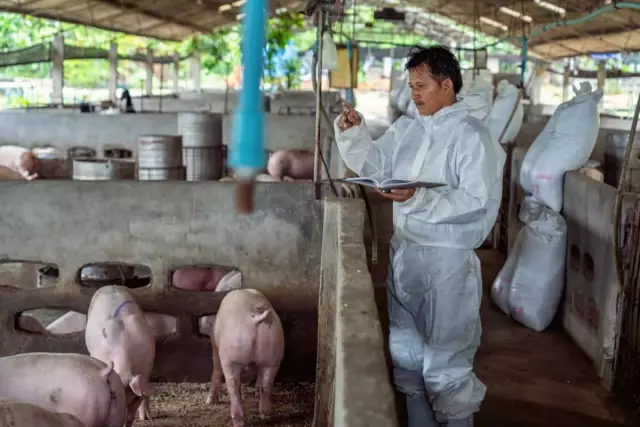- Author Rachel Wainwright [email protected].
- Public 2023-12-15 07:39.
- Last modified 2025-11-02 20:14.
Gall bladder
The gallbladder is an unpaired auxiliary human organ that stores bile and controls its entry into the digestive tract. It is an elongated pear-shaped muscle sac and is located in the right hypochondrium under the liver. Typically, the size of the gallbladder varies from 2 to 3 cm in width and 7 to 10 cm in length, and its capacity is 50 ml.

The gallbladder is not an irreplaceable organ, and if removed, the function of bile accumulation is transferred to the duodenum.
The structure of the gallbladder
There are three parts to the gallbladder:
- The bottom, which is the part visible from the front;
- The body is the main enlarged part located between the cystic duct and the bottom;
- The neck is a narrow part that passes into the cystic duct 3-4 cm long, through which the common bile duct occurs.
Bile from the bladder enters the lumen of the duodenum, which, as a rule, is associated with the digestion process. Increased bile formation occurs when eating fatty foods.
The autonomic nervous system controls the work of the gallbladder.
Located next to the liver, the gallbladder is connected to it by a thin connective tissue. This explains the rapid spread of any inflammatory processes occurring in the bladder to the liver parenchyma.
The wall of the gallbladder is multi-layered and includes:
- Muscle frame;
- Inner layer (epithelium);
- Outer layer (serous membrane);
- Mucous membrane.
The blood supply to the gallbladder is provided by:
- Arterial - portal artery extending from the right hepatic artery;
- Venous drainage - bile vein.
Functions of the gallbladder
The main functions of the gallbladder include:
- Accumulation and storage of bile. The bladder stores bile coming from the liver, and is also able to increase its concentration to store a large volume in a small space;
- The secretion of bile, which occurs as a response to food intake (nerve and hormonal factors) through muscle contractions of its wall.
Diseases and pathologies of the gallbladder
The development of many inflammatory diseases (for example, cholecystitis and cholangitis) can lead to prolonged stagnation of bile due to:
- Gallstones;
- Helminths;
- Kinked gallbladder.
One of the common pathologies is the kink of the gallbladder, which is usually formed at the border of the body and the bottom of the bladder, and is often found in children of different ages. In cases of slight inflection, this pathology may not have any effect on the movement of bile and general well-being.
Explicit or double folds of the gallbladder can cause dull, aching, prolonged pain against the background of a feeling of heaviness in the right hypochondrium, which is often accompanied by nausea and a feeling of bitterness in the mouth.
Gallstone disease is one of the most common diseases of the gallbladder. The disease usually does not appear suddenly. Its development can take several years, while not only those prone to obesity and the elderly, but also quite young people, are subject to it. The disease is usually diagnosed by ultrasound and x-rays.
Gallstones are formed from cholesterol salts, bile acids and bilirubin. The causes of stones are different. The most common are:
- Improper nutrition;
- Sedentary lifestyle;
- Obesity;
- Fast weight loss;
- Starvation.
Symptoms such as bitterness in the mouth and heaviness in the right hypochondrium after eating with gallstone disease are especially pronounced after eating pickled, salted and smoked foods and fatty foods.
Medication is usually long-term and stone-dissolving medications must be taken over several years. At the same time, conditions should be created to prevent the development of new stones.
To prevent the formation of gallstones, you should:
- Avoid eating rich foods high in fat;
- Apply a low-calorie diet and increase physical activity if you are overweight;
- Reduce the intake of cholesterol in the body;
- Avoid estrogen treatment if gallstones are found.
Not all types of stones are amenable to drug treatment and the most effective way to treat gallstones is to remove the gallbladder. With laparoscopic cholecystectomy, there is a significantly lower load on the cardiovascular and respiratory system compared to other types of operations.
Removal of the gallbladder by laparoscopic cholecystectomy usually takes place without complications in all forms of gallstone disease. Contraindications to the operation are long pregnancy and coagulopathy.
As a rule, after removing the gallbladder, you can return to normal physical activity in five to seven days.
After the operation, you must follow a special diet to reduce the risk of bile stagnation. When dieting after removal of the gallbladder, fatty foods, alcohol, heavy, spicy, canned and fried foods are categorically excluded. It is also important to ensure a sufficient level of salt and vitamin composition.
Found a mistake in the text? Select it and press Ctrl + Enter.






